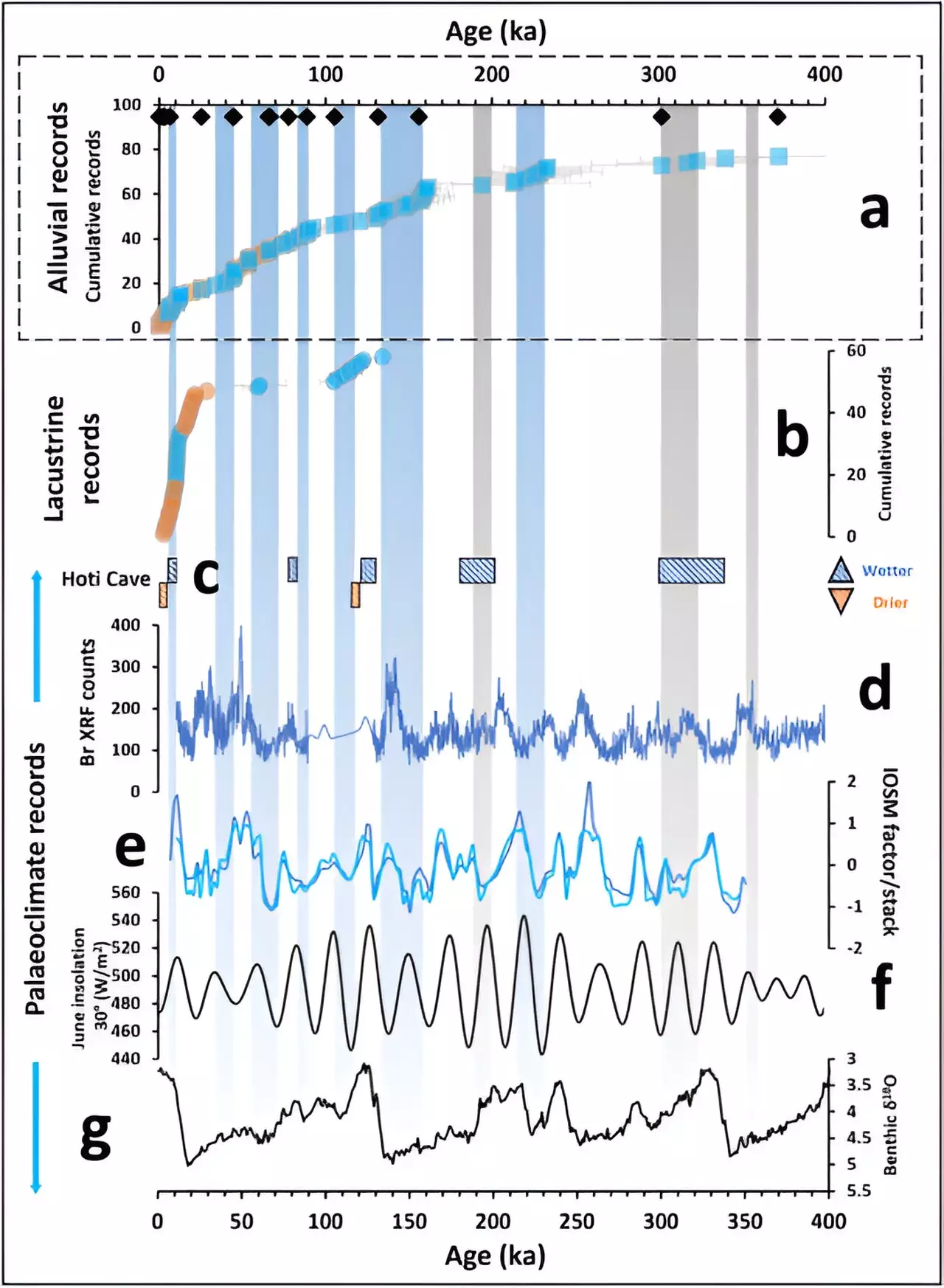The erosion of Earth’s topography plays a significant role in the formation of alluvial fans. These fans are created as sediment is entrained in rivers that flow across mountains, canyons, and other naturally steep landscapes within the catchment. The sediment, which can consist of silt, sand, and gravel, is transported through various mechanisms such as suspension in the water column, saltation (bouncing along the river bed), or traction (rolling larger pebbles). As the topography flattens, the water velocity decelerates, resulting in a decrease in carrying capacity. The deposited sediment forms a fan shape at the mouth of the river on the shallower plain of the break in slope. Over distance from the source, the sediment becomes progressively finer-grained.
Monsoons, which are seasonal climate phenomena characterized by extreme wet and dry conditions, can have a significant impact on the development of alluvial fans. These climate events can increase both the volume and velocity of water, leading to enhanced catchment erosion and sediment transport. The increased water flow supports the creation of larger alluvial fans through a process called aggradation.
New Research in Quaternary Science Reviews
In a recent study published in Quaternary Science Reviews, Dr. Sam Woor and colleagues from the University of Oxford investigated alluvial fans in the arid Hajar mountains of southeast Arabia. The researchers focused on alluvial fans ranging from 0.01 km2 to 10,000 km2, dating back to the Mid-Late Quaternary period. Their main objective was to understand the links between alluvial fan sedimentation and monsoon rainfall patterns influenced by Earth’s orbital cycles, specifically precession (~23,000 years) and eccentricity (~100,000 years).
The research team collected samples from eight sites across mountain-front fans (bajadas) and valley infills. The samples were treated with acids to remove carbonates and organic material. Medium-coarse quartz grains were isolated for optically stimulated luminescence, a technique that relies on the accumulation of radioactive elements in the crystal structure of quartz. These elements, such as uranium, thorium, and potassium, cause electrons to migrate within the crystal and become trapped. By measuring the light emitted by the crystals in response to stimulated light in the laboratory, the scientists can estimate the number of trapped electrons and determine the ages of alluvial aggradation.
Dr. Woor and colleagues observed a connection between grain size and climate patterns. Coarse conglomerates embedded in a finer matrix were found to be indicative of high rainfall events during the Indian Ocean Summer Monsoon. These floodplain deposits were associated with precessional maxima, which intensified seasonal contrasts in one hemisphere compared to the other. In contrast, alluvial fan samples from times of ephemeral flow exhibited fine silt-sand, laminations, and bioturbation from organisms. These samples coincided with precessional minima, suggesting minimal rainfall during those periods.
The research team identified ten periods of sustained hydrological activity in the last 400,000 years, each broadly coinciding with precession and eccentricity peaks. The oldest site in the sample area, dated to 300,000-370,000 years ago, provided evidence of seasonal flooding on a floodplain interspersed with conglomerates forming braided streams during high flow events. Other phases of alluvial fan aggradation were recorded at approximately 156,000, 132,000, 105,000, 89,000, 67,000, 45,000, 25,000, 7,000, and 2,000 years ago.
The study suggests that arid conditions between Indian Ocean Summer Monsoon events provide the opportunity for physical weathering of the landscape. Subsequent heavy rainfall during these monsoon events mobilizes the weathered sediment, depositing coarser-grained sediments in alluvial fans. In addition to the precessional cycle, interglacial periods occurring on a 100,000-year cycle can further enhance precipitation due to increased sea surface temperatures and water vapor abundance in the atmosphere. These two orbital cycles, when overlaid, have a significant impact on Earth’s climate, with even small increases in rainfall affecting drainage networks and alluvial fan formation.
This research provides valuable insights into the climate variability of arid regions during the Quaternary period. It highlights the complex interplay of Earth’s orbital cycles, monsoon events, and the erosion and deposition processes that shape alluvial fans. The findings suggest that larger factors beyond local conditions are at play when it comes to the formation of these unique geomorphic features. Understanding the intricate dynamics of alluvial fan development contributes to a broader understanding of Earth’s climate history and its future implications.


Leave a Reply